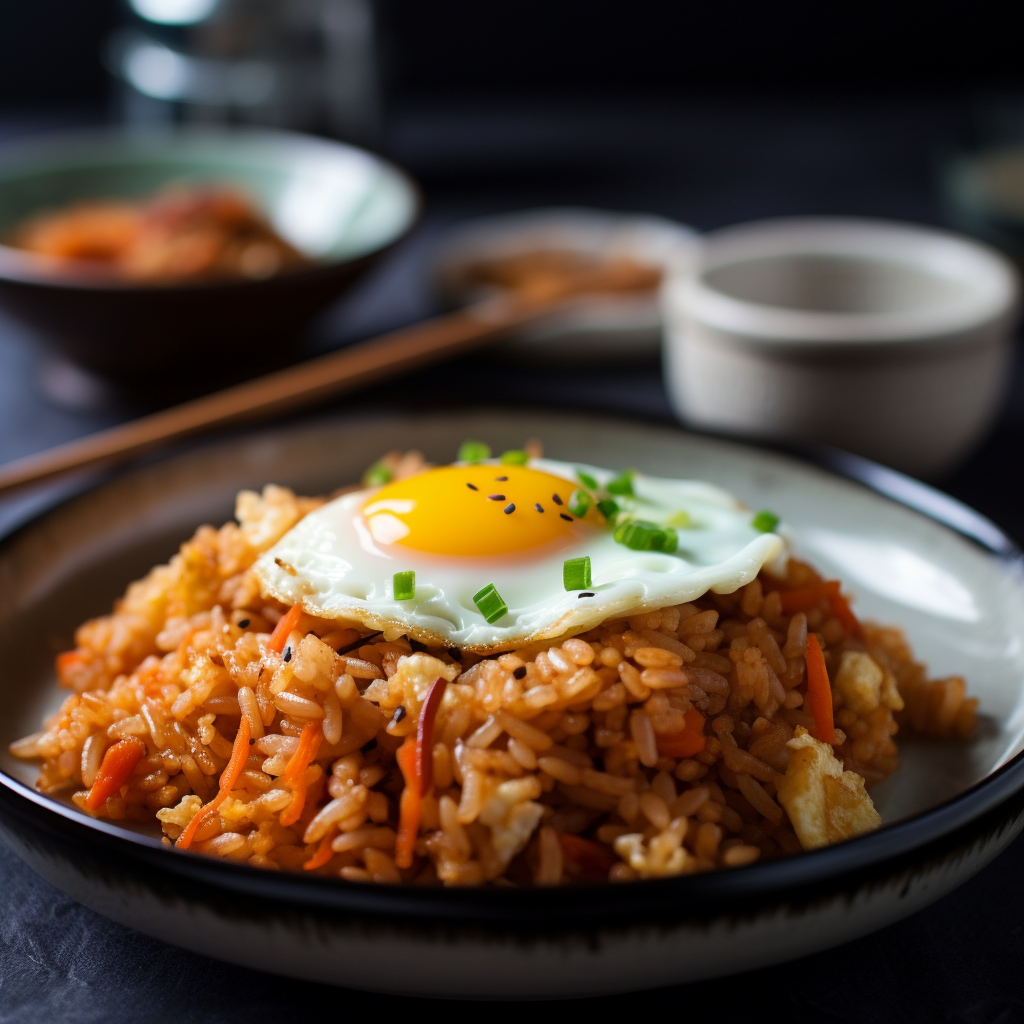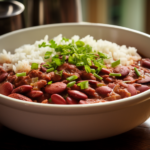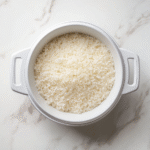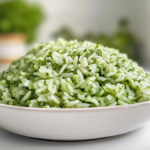It’s Austin here from Beyond The Bayou Blog, bringing you another mouthwatering recipe straight from my kitchen to yours. Today, I whipped up a classic favorite with a twist – Kimchi Fried Rice. This dish has got everything: it’s flavorful, satisfying, and oh-so-easy to make.
As an American-based food blogger, I love exploring different cuisines and putting my own spin on things, and this recipe is no exception. You might be wondering why kimchi fried rice today? It is really exciting for me to tell you that one of my Korean friends is coming to visit me today and as he knows I am a food enthusiast he wants me to cook this recipe for him.
Whether you’re a kimchi connoisseur or just looking to spice up your dinner routine, this dish is sure to hit the spot. So grab your apron and get ready to dive into a bowl of deliciousness – let’s get cooking! Wanna try other rice recipes? Try our Dirty Rice and Bomba Rice.
Which Type of Rice Is Best for Kimchi Fried Rice?
Kimchi fried rice is an excellent way to repurpose leftover rice.
You might have heard that rice that’s a day or two old fries up better. Let me explain why. Freshly cooked rice tends to be moist and soft, which can result in a sticky texture when stir-fried—not exactly what we’re aiming for in a stir-fry dish!
However, if you’re adept at controlling the moisture level, you can still use freshly cooked rice. Just adjust your cooking method slightly by using a tad less water when cooking the rice to intentionally make it drier.
Korean’s Kimchi Fried Rice Recipe
Equipment
- Pan or Wok
- Spatula
Ingredients
- 1 cup kimchi
- 150 g bacon
- 3 cups steamed short grain rice
- 1/2 tsp minced garlic
- 1/2 tsp sesame oil
- 1 tbsp toasted sesame seeds
- roasted seasoned seaweed
- 1 pack enoki mushrooms
- 4 large eggs
- 1/4 cup Kimchi juice
- 1 tbsp cooking oil
- 1/2 stalk green onion
Instructions
- Preheat pan/wok on medium-high heat, add and spread cooking oil.
- Stir garlic for 10 seconds, then add bacon and cook halfway.
- Add kimchi, cook until 80% done.
- Add mushrooms, stir briefly, then reduce heat.
- Mix in rice and kimchi juice thoroughly.
- Add sesame oil, mix, and remove from heat.
- Serve on a plate, garnish with optional sesame seeds, green onions, seaweed strips, and a cooked egg on top.
Notes
- For best results, use kimchi that’s at least 2 weeks old. If it’s not, add 1/2 tsp of rice vinegar to the kimchi juice to give it a sour flavor.
- If you’re having trouble getting 1/4 cup of kimchi juice, especially with fresh kimchi, use 2 1/2 tablespoons of kimchi juice and 1 tablespoon of gochujang instead.
- For a non-spicy option, substitute 1 tablespoon of soy sauce for gochujang.
- Remember: 1 tablespoon equals 15 milliliters, and 1 cup equals 250 milliliters.
Nutrition
Possible Variations We Can Make!
- Protein Variation: Instead of bacon, you can use diced chicken, pork, beef, or even tofu for a different protein option. Marinate the protein in soy sauce or your favorite seasonings before cooking for added flavor.
- Vegetable Additions: Experiment with adding different vegetables to the fried rice for added nutrients and texture. Bell peppers, carrots, spinach, or peas are all excellent choices. Just make sure to chop them finely and stir-fry them along with the other ingredients.
- Spice Level: Adjust the spice level according to your preference. If you like it extra spicy, add a bit of gochugaru (Korean red pepper flakes) or sriracha sauce to kick up the heat. Conversely, if you prefer a milder flavor, reduce the amount of kimchi or omit the gochujang altogether.
- Grain Swap: While traditional kimchi fried rice uses short grain rice, you can try using other types of rice or grains for a healthier twist. Brown rice, quinoa, or cauliflower rice are all great alternatives that offer different textures and flavors.
- Seafood Twist: For a seafood twist, add shrimp, squid, or crab meat to the fried rice. Cook the seafood separately and stir it in at the end to prevent overcooking.
- Asian-Inspired Sauces: Enhance the flavor of the fried rice by adding a splash of soy sauce, oyster sauce, or fish sauce. These umami-rich sauces will deepen the flavor profile and add complexity to the dish.
- Fresh Herbs: Sprinkle chopped fresh herbs such as cilantro, Thai basil, or parsley over the finished dish for a burst of freshness and color.
Feel free to get creative and tailor the recipe to suit your taste preferences and dietary needs. With these variations, you can enjoy a new and exciting twist on classic Kimchi Fried Rice every time you make it!
What Goes Well with Kimchi Fried Rice?






